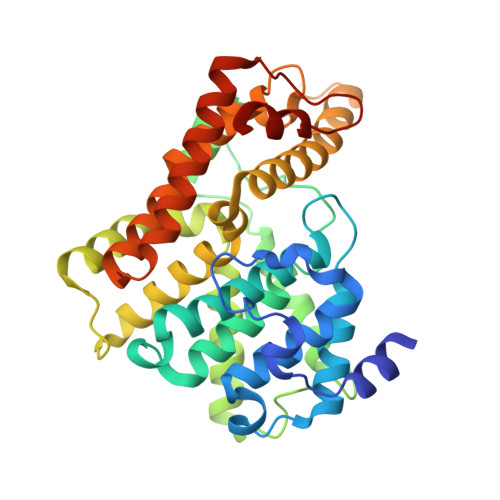Predicting Binding Free Energies of PDE2 Inhibitors. The Difficulties of Protein Conformation.
Perez-Benito, L., Keranen, H., van Vlijmen, H., Tresadern, G.(2018) Sci Rep 8: 4883-4883
- PubMed: 29559702
- DOI: https://doi.org/10.1038/s41598-018-23039-5
- Primary Citation of Related Structures:
6EZF - PubMed Abstract:
A congeneric series of 21 phosphodiesterase 2 (PDE2) inhibitors are reported. Crystal structures show how the molecules can occupy a 'top-pocket' of the active site. Molecules with small substituents do not enter the pocket, a critical leucine (Leu770) is closed and water molecules are present. Large substituents enter the pocket, opening the Leu770 conformation and displacing the waters. We also report an X-ray structure revealing a new conformation of the PDE2 active site domain. The relative binding affinities of these compounds were studied with free energy perturbation (FEP) methods and it represents an attractive real-world test case. In general, the calculations could predict the energy of small-to-small, or large-to-large molecule perturbations. However, accurately capturing the transition from small-to-large proved challenging. Only when using alternative protein conformations did results improve. The new X-ray structure, along with a modelled dimer, conferred stability to the catalytic domain during the FEP molecular dynamics (MD) simulations, increasing the convergence and thereby improving the prediction of ΔΔG of binding for some small-to-large transitions. In summary, we found the most significant improvement in results when using different protein structures, and this data set is useful for future free energy validation studies.
- Computational Chemistry, Janssen Research & Development, Janssen Pharmaceutica N. V., Turnhoutseweg 30, B-2340, Beerse, Belgium.
Organizational Affiliation:






















